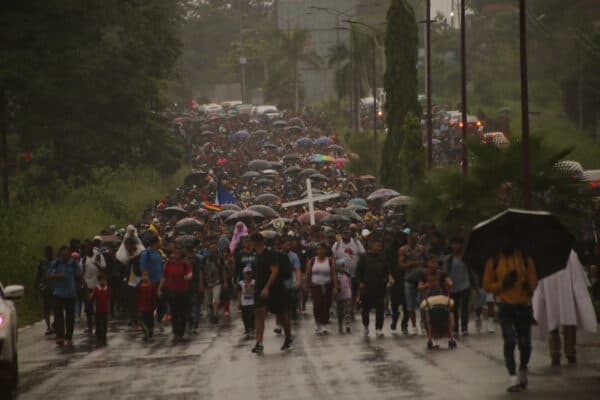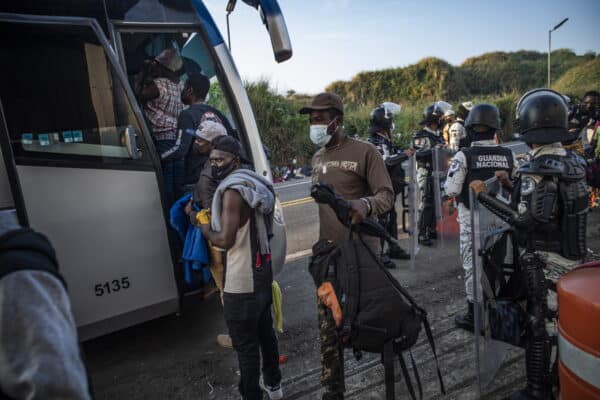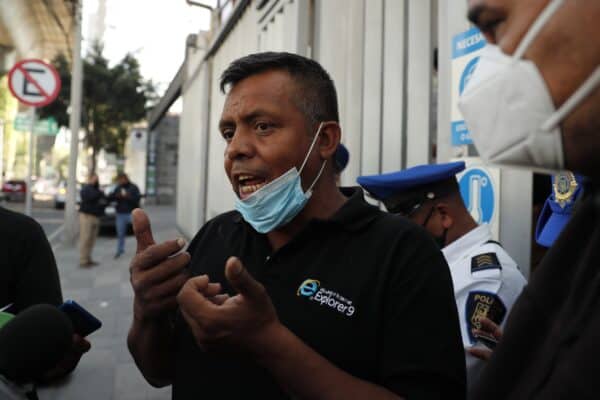American Mirage
John Jackson, American Renaissance, June 23, 2022
Independent filmmaker Lauren Southern has produced a second documentary about mass migration, this one about Mexico and the United States rather than Europe. As with her previous film, Borderless, it shows that current influx enriches a few at the expense of everyone else.
Although this is clearly a very important subject for whites, Mrs. Southern never puts the problem in racial terms, though she covers it more honestly than the mainstream media. Her documentary footage is impressive, including interviews with criminal people-smugglers. Nothing appears cherry-picked; the video seems to be an honest attempt to show what migration across our southern border is really like.
American Mirage follows illegal immigrants from Latin America into Mexico and the United States. It begins with a reading of Edgar Allen Poe’s Eldorado, about the failed search for a land of great riches. As Mrs. Southern notes, the US has often been seen as a land of opportunity for foreigners, even though it can hardly take care of many of its own people.
There are now more migrants waiting to enter the United States than there have been for more than 20 years. Many are not from Mexico, but from further south. They enter Mexico illegally by crossing the Suchiate River between Guatemala and the southern state of Chiapas, and Mrs. Southern interviews a man who ferries them across. He estimates that he carries 40 people a day, and there are thousands of such crossing points. He charges only 20 pesos (about $1) per person.
Once in Mexico, local smugglers take migrants to a processing center at a stadium in a town called Tapachula. It is now overcrowded with migrants, which means higher crime and even water shortages. UN offices hand out cash cards to migrants.

06 June 2022, Mexico, Tapachula: Numerous migrants set off north on foot under the rain. Thousands of migrants are headed to the US-Mexican border in a caravan. Some 6,000 people, including many from Venezuela and Central America, have begun walking from the southern tip of Mexico north as part of a caravan. (Credit Image: © Daniel Diaz / dpa via ZUMA Press)
These people are physically in Mexico, but without authorization. If they push further north, they are subject to arrest. There are long waits for appointments with the authorities, and many illegals run out of money, supplies, and patience.
Some try to force the authorities to let them in. In March, Mexico’s immigration authorities stopped processing illegals in Tapachula, after the fourth attack by hundreds of people on its facilities.
Mrs. Southern notes that migrants are unpopular. A Pew Research survey found that in many nations, majorities or large minorities want less immigration. One Mexican man interviewed complained that newcomers block roads and attack people, and thought that if they had good intentions they would come legally.
Yet another emphasized that Mexicans are “not racist,” but that Haitian migrants are violent and disruptive and should go home. He says that many other Mexicans share his views. One smuggler notes that he refuses to take black migrants — mainly Haitians — because the legal penalty for smuggling Haitians is higher than for others, such as Hondurans.

December 20, 2021, Tapachula, Chiapas, Mexico: Migrant Haitians wait to board a bus Northbound on the side of a highway in Chiapas, Mexico. The slow deployment of buses headed northbound has frustrated the thousands of Haitians and other migrants unhoused in the city. (Credit Image: © Richard Tsong-Taatarii / ZUMA Press Wire Service)
In 2014, the Mexican government cracked down with something called the Southern Border Program, partly funded by the US government. The number of Central Americans caught went up by 71 percent from July of one year to June of the next. This forced migrants to use new methods, such as moving in caravans, which include many women and children.
Independent journalist Allie Bradley, who appears in the video, notes that they take great risks by traveling long distances on foot; she says she saw “a lot of people sick and dying in these caravans,” including children. Mrs. Southern notes that migrants think children are a passport into America. They even bring — and endanger — children not their own in the hope of exploiting American sympathy.
Some migrants ride on the cars of a freight train known as La Bestia (The Beast) all the way from Chiapas to towns along the US border. It is also called The Train of Death; gangs rape, rob, and murder migrants. There was a ban on passengers as part of the 2014 crackdown, but reckless migrants have begun riding it again.
Mrs. Southern talked to Irineo Mujica, a Mexican and American dual citizen who encourages migrants to ride the train. Mr. Mujica helps organize caravans, hoping to put pressure on US and Mexican immigration policy. He complains that although Joe Biden gave the impression that he would be more pro-immigrant than Donald Trump, US policies have not changed. Mr. Mujica argues that Mr. Biden’s statements have encouraged people to come north.

December 16, 2021, Ciudad de Mexico, Mexico: The activist of Pueblos Sin Fronteras Irineo Mujica, speaks as he leaves the headquarters of the National Human Rights Commission (CNDH). Representatives of the migrant caravan met this Wednesday with the president of the National Human Rights Commission (CNDH), Rosario Piedra, to ask that she intercede with the Mexican government to regularize their immigration status. (Credit Image: © Jose Mendez / EFE via ZUMA Press)
Allie Bradley notes that 90 percent of the migrants she saw in caravans were economic migrants, not refugees, but they got in anyway. She says this lenient policy encourages fake refugees.
The film shows Mexican authorities negotiating with the caravans. One group blocks traffic, demanding buses to take them north. The authorities agree, but another caravan blocks the buses.
Mexico offers work visas to an entire caravan, but all 5,000 must agree. Some would rather go to the US, so the deal is off. Police try to hold caravaners back by force, but are outnumbered and overrun.
Mrs. Southern visits the cartel-dominated state of Tamaulipas, which borders Texas. One cartel controls a border-crossing site where it takes fees from about a quarter-million people who enter the US every year. Mrs. Southern’s interpreter says that in this area, human traffickers are called polleros (chicken herders, suggesting that migrants are, like chickens, led to slaughter).
The film says little about what happens to the migrants once they reach the US, but we can guess. They won’t have much money or good work prospects and are unlikely to assimilate. It would be better if they had never come, but the film does not say how they should be stopped.
















